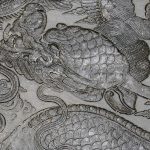(A Peaceful Corner with Historical Imprints)
Aside from the sheer number of motorbikes on the roads, another thing that strikes visitors to Hanoi, the former capital of Vietnam, is how busy and packed the city appears to be.
Almost any traveler can be charmed by Hanoi’s boundless grandeur, history, and enchanted legends. This city is home to a treasure with historical imprints, the Temple of Literature, which was regarded as the first national university. It is interwoven with secret attractions of tranquility and tranquillity.
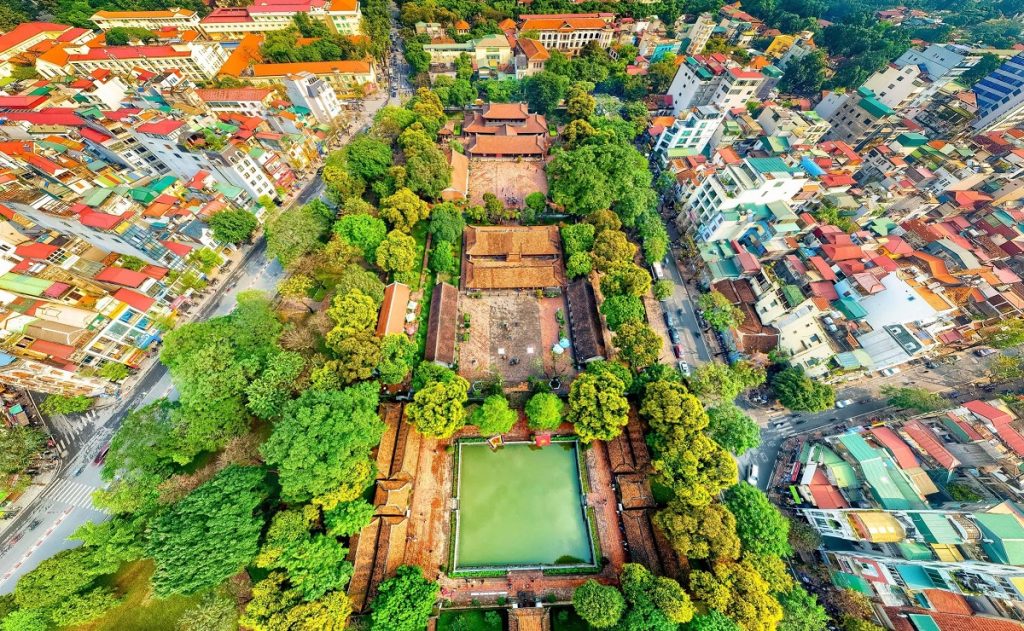
When you come here, you’ll realize the city’s center still has a tranquil spot.
Location: 58 Quốc Tử Giám, Văn Miếu, Đống Đa, Hà Nội
Opening hours: every day.
In summer ( From April to October) : 07:30-17:30
In winter (From October to April) : 08:00-17:00
Entrance fee
Adults: 30,000 VND (~US$ 1.3) for Vietnamese and foreigners
Students: 15,000 VND (~US$ 0.7) (student card required)
Children under 15: Free
Dress code: no tank-top or miniskirt allowed, always take off your hat when being in the sanctuary area.
History
Emperor Ly Thanh Tong established the Temple of Literature in 1070 as a temple to honor the Chinese philosopher Confucius. It is situated to the south of the Imperial Citadel of Thang Long.
His son founded the Imperial Academy in 1076 as a royal school for only the aristocracy, including princes, nobles, and officials.
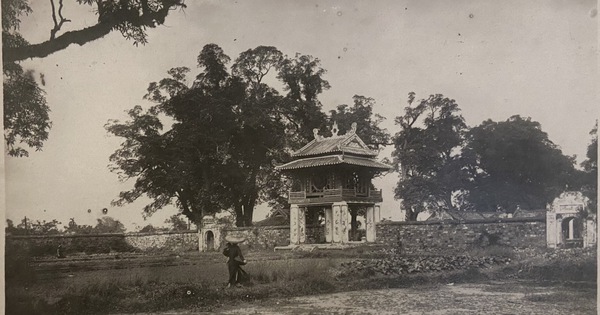
The Imperial Academy, which was regarded as Vietnam’s first university, was open for about 700 years and produced a large number of eminent academics and government officials. The Temple of Literature maintained its priceless architectural and cultural value despite ongoing wars and catastrophes.
Architecture
Five courtyards in various designs make up the over 54000 square meter Temple of Literature, which is encircled by an old brick wall. There are various key components that make up the entire area, which are broken down below.
The First Courtyard – Đại Trung Môn
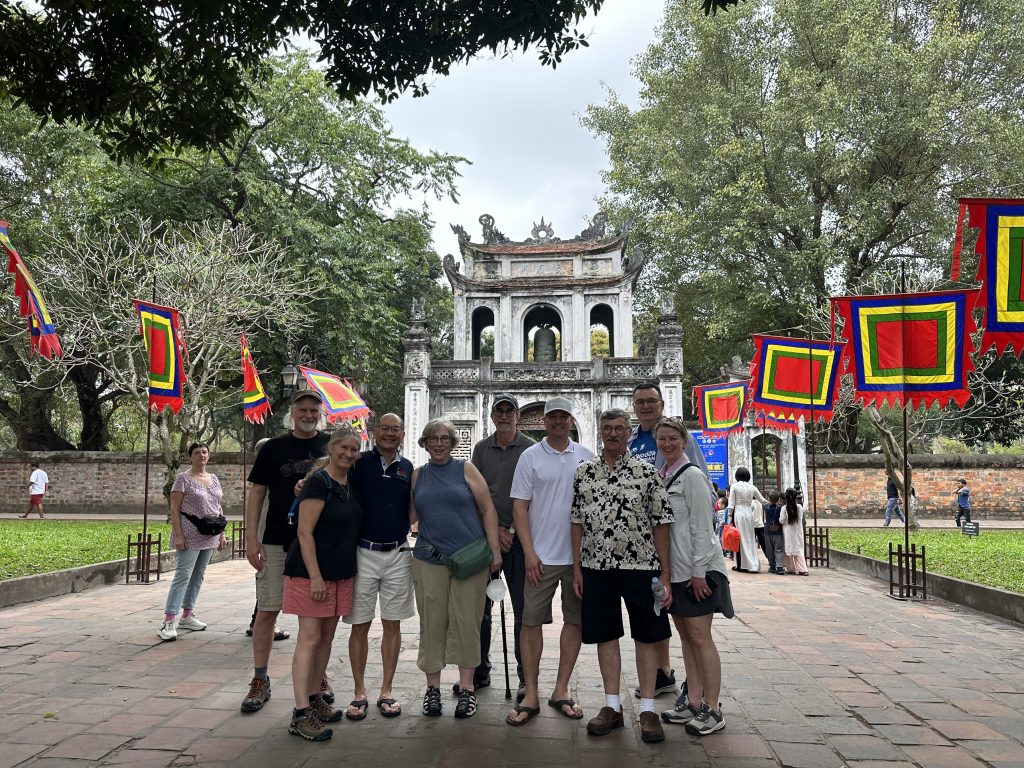
You leave the bustle of Hanoi and enter a space of varied colors of green after crossing the large gate of the first courtyard (the Great Middle Gate).
The gates on the left and right are referred to as Virtue Gate and Talent Gate, respectively, which represented the King’s desire that students will pursue higher education in this country.
You might observe that the gate’s top suddenly bears the image of a fish. According to legend, God hosts an annual tournament for fish, and the one that can cross the waterfall’s opposite bank while dodging the heaviest waves will be changed into a mighty dragon.
That fish actually represents a pupil. He can only become knowledgeable and smart enough to pass all the examinations and become a government official by studying diligently and never giving up.
Students back then learned everything there was to know about Confucius, Chinese literature, and culture. There were three rounds: the regional examination (Hương examination), the national examination (Hội examination), and the royal examination (Đình examination), which was held a year after the other two. If a person lacked the necessary talent or luck, he would have to wait three years before sitting for the exam.
The Second Courtyard – Khuê Văn Các
Khue Van Cac, the Pavilion of Constellation, is a well-known image that appears on the reverse of the 100,000 Vietnam dong banknote and serves as a symbol of Hanoi. Four white-washed stone stilts were used in the 1805 construction of this distinctive architectural piece.
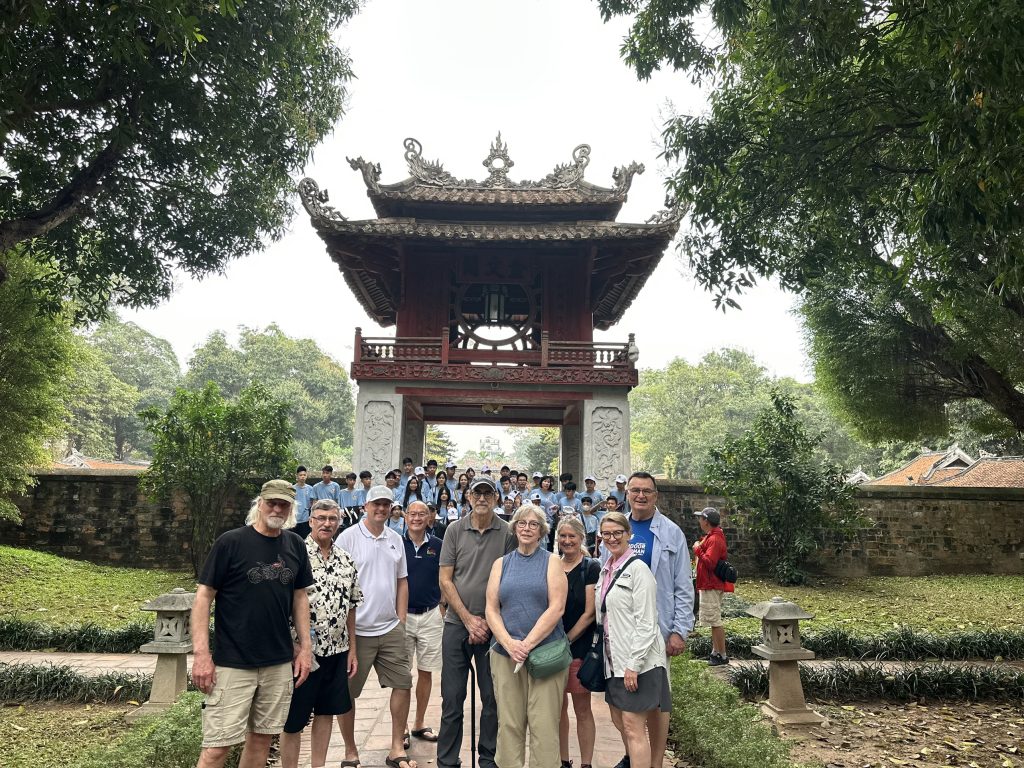
The brightest star in the sky is called Khue, and the entire constellation resembles the Chinese character for “literature”. It suggested a desire for a successful and advanced educational system. A thousand-year-old bronze bell that hangs from the roof inside the courtyard is only rung on lucky days.
The Third Courtyard – Thien Quang Well
The Well of Heavenly Clarity is another name for the third square courtyard.
Is this oddly shaped well square? The square on top of the pavilion stands in for the ground, and the circle at its apex represents the sky. Together, these two elements formed harmony. This well serves as a mirror, capturing the divine energy of the cosmos.
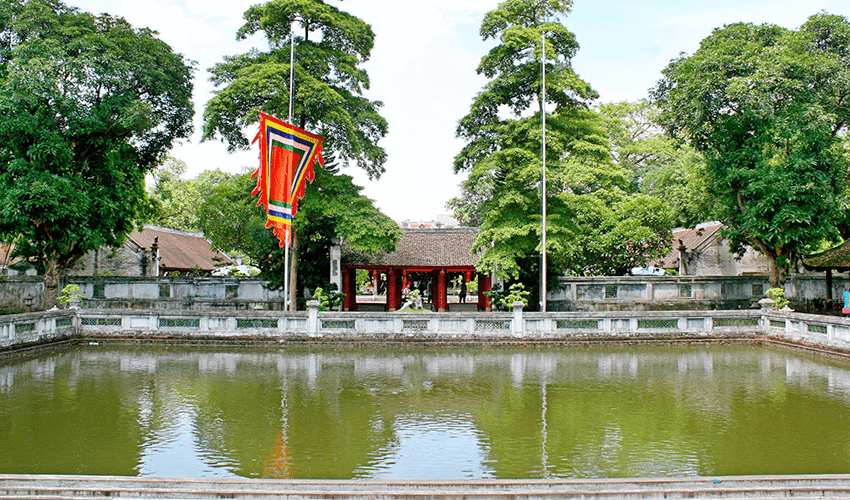
More importantly, the well not only enabled students dress and see themselves before entering the sacred inner area, it also preserved the Temple of Literature’s serene environment.
A house of stelae that is exceptional in the entire globe may be seen if one looks over the side of the courtyard. Stone turtles carried massive stelae on their backs in this area of the courtyard, honoring Confucianism and the Emperor, outlining that dynasty’s philosophy and detailing details about the tests and the Doctors.
Only 82 of the original 116 stelae are still standing today due to wars. We learned about the dynasty’s architectural style from the size and shape of the turtles.
Turtles, why? The dragon, unicorn, turtle, and phoenix are the four holy animals in Vietnamese culture; the turtle is the only actual one. In addition to being familiar with Vietnamese culture, Turtle also represents longevity and wisdom via the people it carries on its back—successful individuals and knowledge.
The Fourth Courtyard – Đại Thành Môn
The beautiful House of Ceremonies and the sanctuary to Confucius are located in the fourth courtyard, which is known as the “gate to great success” in Vietnamese. This courtyard is distinctive within the complex due to its crimson columns and wood beam ceilings from which antique-style lanterns hang.
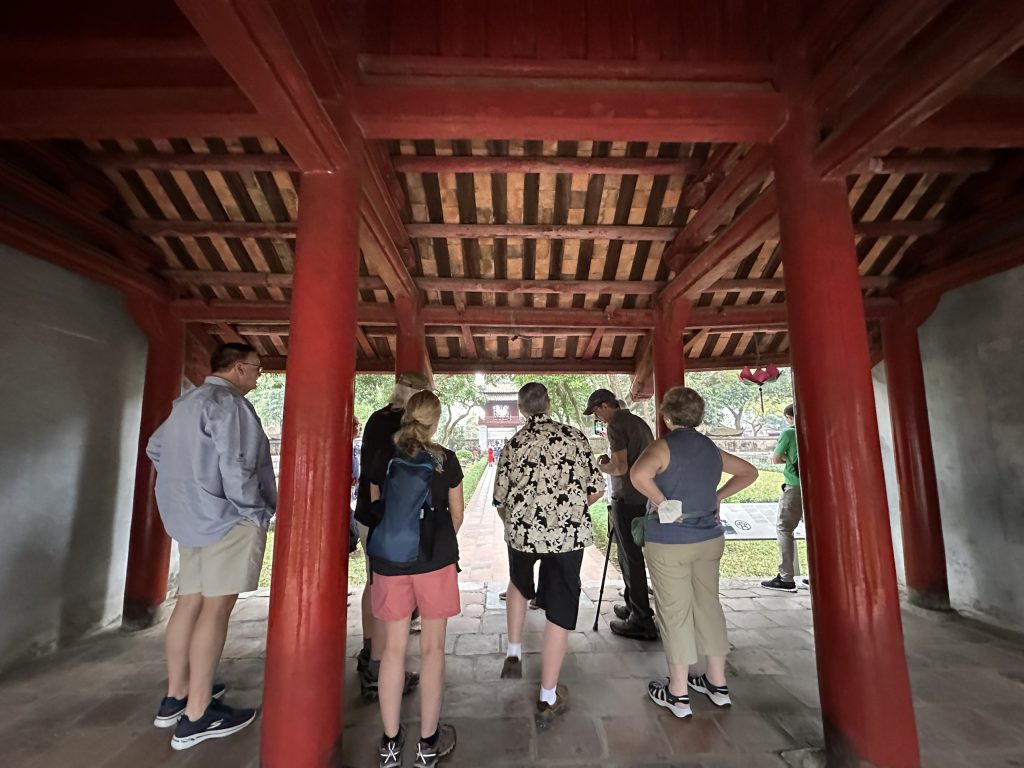
There is a standard altar in the center of the sanctuary, one that may be found in any Vietnamese family’s home. The most sacred and central area of the home, where ancestors are worshipped, is always where the altar is placed. The altar must contain the five basic elements of Metal, Wood, Water, Fire, and Earth, as well as offerings and the aroma of incense.
Do not neglect to learn more about what exhibits those elements when you visit this courtyard!
There is a pair of cranes and a turtle on each side of the altar. They are seen to be close friends and exhibit an enduring desire for peace.
The Fifth Courtyard The Grounds of Imperial Academy
The fifth courtyard has two levels. The first rector of the Imperia Academy and a brilliant teacher named Chu Văn An, whose life was dedicated to Vietnamese education, is commemorated by a statue on the ground level. Additionally, there exist images and artifacts documenting Confucian schooling at the time in Vietnam.
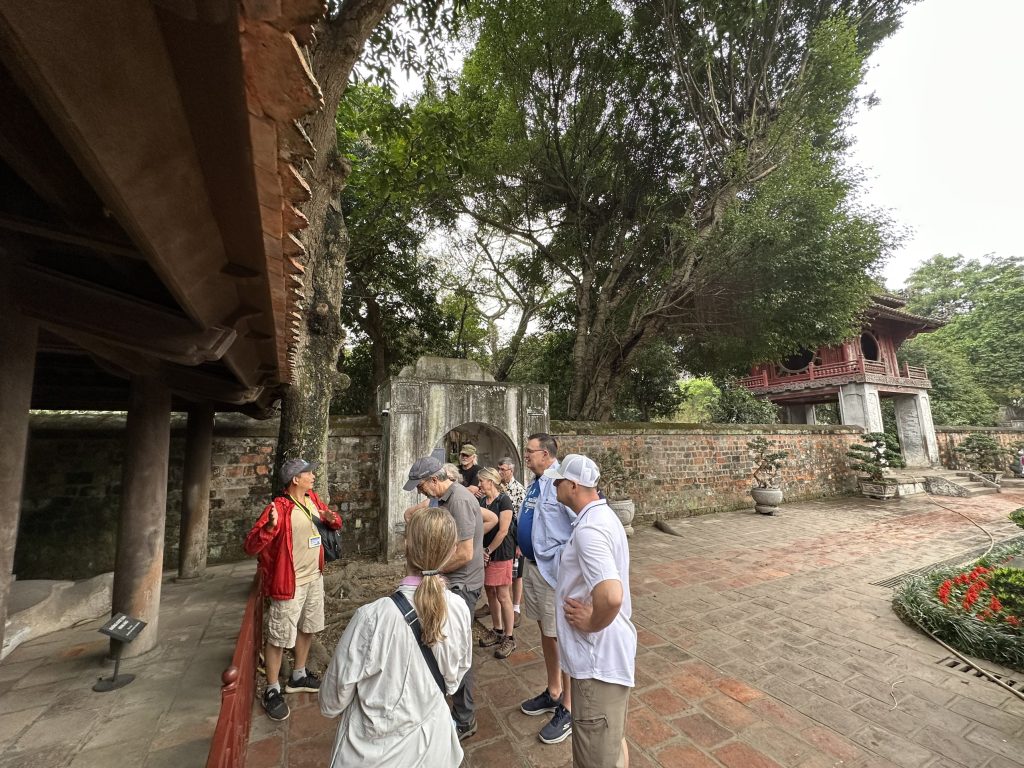
The three kings who had the greatest impact on the establishment of the temple and the academy were worshipped on the upper floor. They were Lê Thánh Tông, who founded the temple in 1070, Lê Nhân Tông, who established the Imperial Academy, and Lê Thánh Tông, who in 1484 gave the order for the construction of the stone turtles and the Stelae of Doctor.
Tips for Visiting Temple of Literature Hanoi
- Bring cash: the ticket office does not accept paying by credit card.
- Don’t arrive too late: you should spend at least 01 hour exploring the Temple of Literature, so be mindful of timing. One more thing to know, summer in Hanoi is extremely hot, especially in the afternoon. Unless you are good to go beating the heat, just arrive in the morning!
- Photography is allowed, but be respectful: please don’t laugh or talk too loud in the worshipping area.
There are many unique Hanoi attractions and places to see in this fascinating city. Temple of Literature is a must-see for anyone interested in Vietnam’s lengthy and fascinating history or who enjoys learning about some of Hanoi’s architectural and cultural elements.
Hanoi offers you the ability to learn more about Vietnam as well as a place to unwind. If you’ve gone to this great location, don’t forget to comment below and tell us about your experience!



